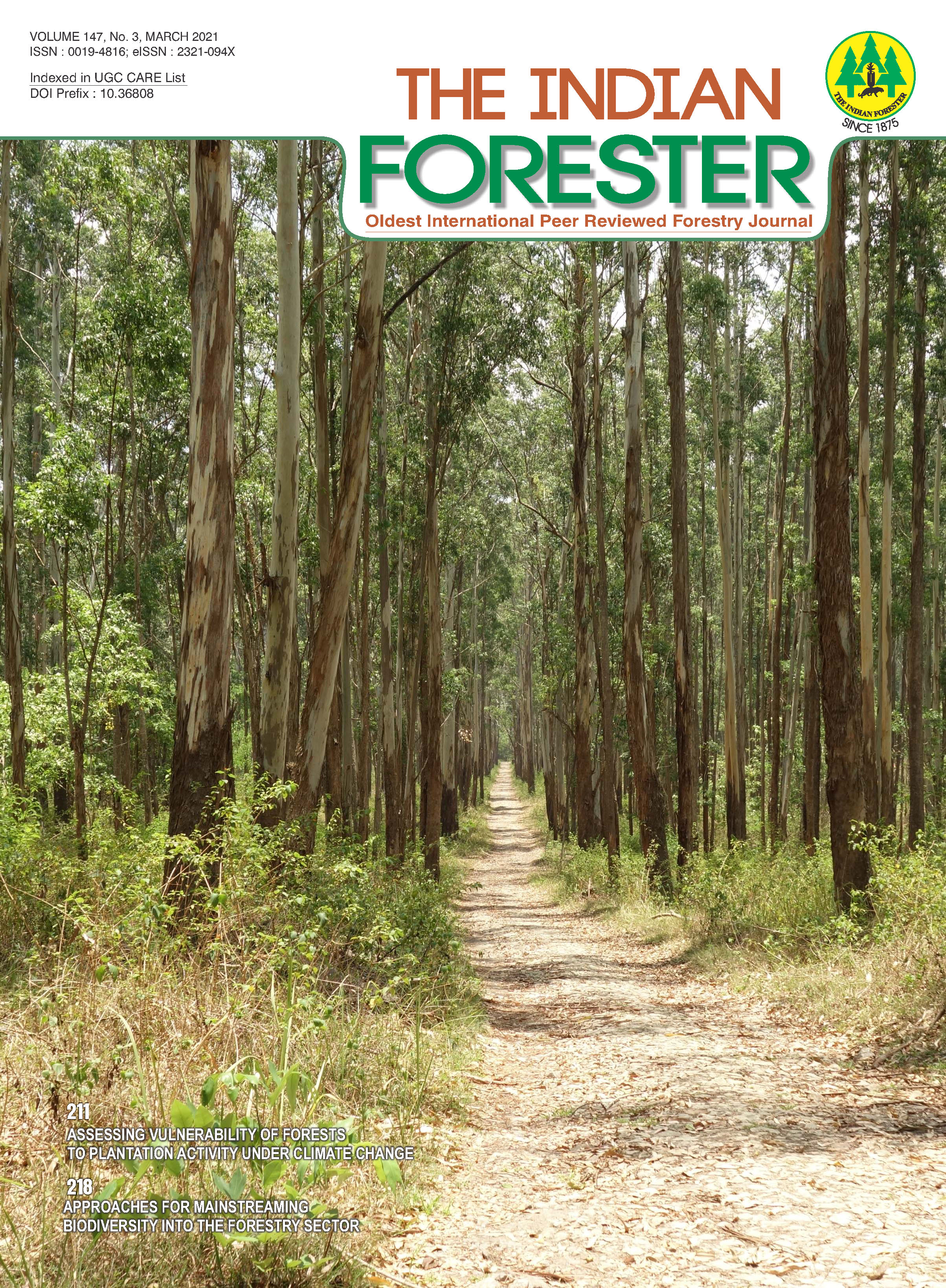Augmentative Modelling: A Template for Populus sp. Stand Biomass in Eurasia Region
DOI:
https://doi.org/10.36808/if/2021/v147i3/151851Keywords:
Genus Populus Sp., Biomass of Forests, Allometric Models, Sample Plots, Biological Productivity..Abstract
Today, estimating of biological productivity or carbon-depositing ability of forests is going on the global level, and its increase is one of the major factors of climate stabilization. In recent years, two trends in the harmonization of allometric models of tree biomass have been developing. The first of them is related to ensuring the additivity of the biomass component composition, and the second one – to the search for the so-called generic model applicable to a wide range of environmental conditions. However, all "generic" models give significant biases in their application in local conditions. In our modeling, we adhere to the principle of biomass additivity, split "generic" model into regional variants by introducing dummy variables, and build the model at the transcontinental level for the first time. When using the unique in terms of the volume of database on the level of stand of the genus Populus sp. in a number of 212 sample plots, the trans-Eurasian additive allometric models of biomass of stands for Eurasian Populus forests are developed, and thereby the combined problem of model additivity and generality is solved. The additive model of forest biomass of Populus is harmonized in two ways: it eliminated the internal contradictions of the component and the total biomass equations, and in addition, it takes into account regional differences of forest stands not only on total, aboveground and underground biomass, but also on its component structure, i.e. it reflects the regional peculiarities of the component structure of biomass.References
Baskerville G.L. (1972). Use of logarithmic regression in the estimation of plant biomass. Canadian Journal of Forest Research, 2: 49-53.
Bi H., Long Y., Turner J., Lei Y., Snowdon P., Li Y., Harper R., Zerihun A. and Ximenes F. (2010). Additive prediction of aboveground biomass for Pinus radiata (D. Don) plantations. Forest Ecology and Management, 259: 2301-2314.
Budyko М.I. (1977). Global ecology. Mysl Publishing, Moscow, 328 p.
Cunia T. and Briggs R.D. (1984). Forcing additivity of biomass tables: some empirical results. Canadian Journal of Forest Research, 14: 376-384.
Dong L., Zhang L. and Li F. (2015). A three-step proportional weighting system of nonlinear biomass equations. Forest Science, 61(1): 35-45.
Fu L.Y., Zeng W.S., Tang S.Z., Sharma R.P. and Li H.K. (2012). Using linear mixed model and dummy variable model approaches to construct compatible single-tree biomass equations at different scales-A case study for Masson pine in Southern China. Journal of Forest Science, 58(3): 101-115.
Jacobs M.W. and Cunia T. (1980). Use of dummy variables to harmonize tree biomass tables. Canadian Journal of Forest Research, 10(4): 483-490.
Reed D.D. and Green E.J. (1985). A method of forcing additivity of biomass tables when using nonlinear models. Canadian Journal of Forest Research, 15: 1184-1187.
Tang S., Zhang H. and Xu H. (2000). Study on establish and estimate method of compatible biomass model. Scientia Silvae Sinica, 36: 19-27 (in Chinese with English abstract).
Usoltsev V.A. (1989). Recurrent regression system as a base for tree and stand biomass tables. In: Proceedings of the IUFRO Project Group P3.05-00 Meeting “Harvesting and utilization of tree foliageâ€, Riga, pp. 217 245. Available from: LVMI Silava: RÄ«gasiela 111, Salaspils LV-2169 Latvia.
Usoltsev V.A. (2010). Eurasian forest biomass and primary production data. Ural Branch of Russian Academy of Sciences, Yekaterinburg, 574 p. (http://elar.usfeu.ru/handle/123456789/2606).
Usoltsev V.A. (2013). Forest biomass and primary production database for Eurasia. CD-version. The second edition, enlarged and re-harmonized. Ural State Forest Engineering University, Yekaterinburg (http://elar.usfeu.ru/handle/123456789/3059).
Downloads
Downloads
Published
How to Cite
Issue
Section
License
Unless otherwise stated, copyright or similar rights in all materials presented on the site, including graphical images, are owned by Indian Forester.





